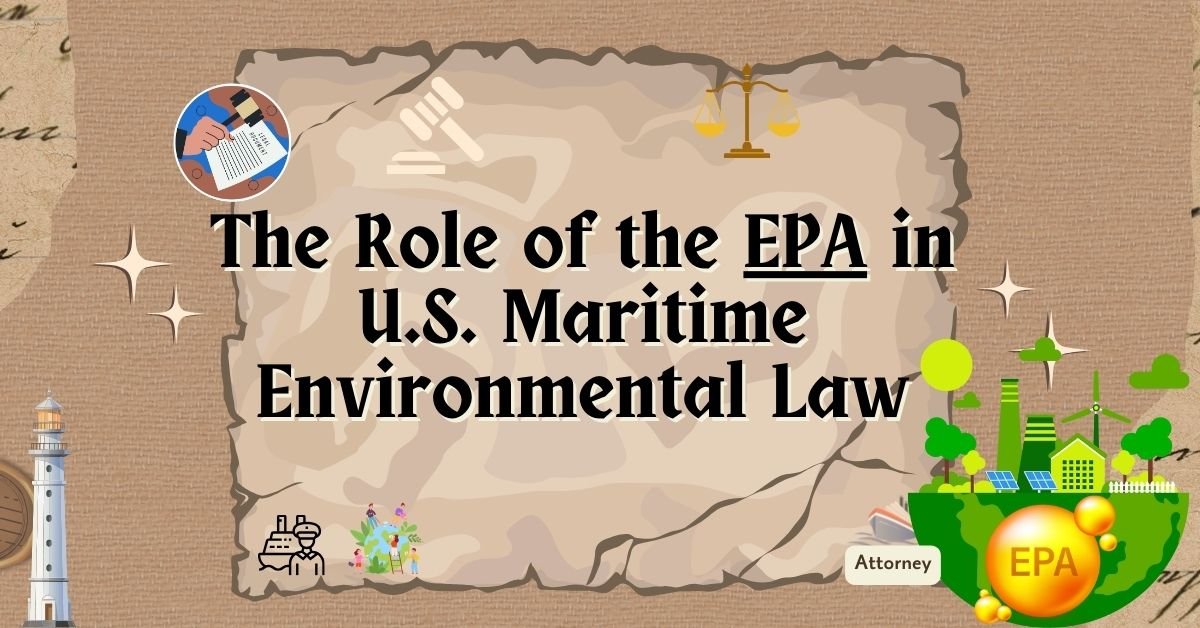Introduction
The Environmental Protection Agency (EPA) plays a critical role in shaping and enforcing U.S. maritime environmental law. This article delves into the EPA’s responsibilities and impact on maritime operations.
History and Mission of the EPA
Established in 1970, the EPA’s mission is to protect human health and the environment. Its reach extends into various sectors, including maritime activities.
EPA’s Jurisdiction in Maritime Affairs
The EPA’s authority covers numerous aspects of maritime environmental regulation, from water pollution to air quality.
Key EPA Regulations Affecting Maritime Operations
Several EPA regulations have a significant impact on maritime operations, aiming to reduce environmental harm from ships and port activities.
The Clean Water Act and Marine Pollution
The EPA enforces the Clean Water Act, which includes regulations on discharges into U.S. waters, crucial for reducing marine pollution.
Oil Pollution Act Enforcement
The EPA plays a significant role in enforcing the Oil Pollution Act, ensuring responsible practices for preventing and responding to oil spills.
Air Quality Standards for Maritime Vessels
Regulations on air emissions from maritime vessels, particularly focusing on sulfur and nitrogen oxides, fall under the EPA’s purview.
Regulating Ballast Water and Invasive Species
The EPA is involved in controlling discharges of ballast water to prevent the spread of invasive species, a major ecological concern.
Waste Management and Disposal at Sea
Maritime waste management and disposal practices are regulated by the EPA to protect marine environments from pollution.
Collaboration with the U.S. Coast Guard
The EPA works closely with the U.S. Coast Guard in enforcing maritime environmental laws, combining resources and expertise.
EPA’s Role in Climate Change and Maritime Sector
The EPA is increasingly focused on addressing the impacts of climate change on maritime operations, pushing for sustainable practices.
Technological Innovations and EPA Regulations
Advancements in technology influence the EPA’s approach to maritime environmental regulation, from emissions monitoring to waste management.
Challenges in Environmental Regulation
The EPA faces challenges in balancing environmental protection with the economic realities of the maritime industry.
EPA’s Future in Maritime Environmental Protection
Looking ahead, the EPA’s role in maritime environmental protection is expected to evolve with new regulations and initiatives.
Conclusion
The EPA’s role in U.S. maritime environmental law is vital for safeguarding our oceans and coastlines. Through its regulations and enforcement, the EPA ensures that maritime activities are conducted in an environmentally responsible manner. Play sprunki phase 28 Anytime, Anywhere!
FAQs
- How does the EPA enforce the Clean Water Act in maritime contexts?
- What are the EPA’s regulations on air emissions from ships?
- How does the EPA regulate ballast water discharges?
- What challenges does the EPA face in maritime environmental protection?
- What future initiatives might the EPA undertake in the maritime sector?
